#mar del plata jazz
Text
Las Tussi prometen fiesta en Montevideo

Las Tussi - PH Tobi Polanco
Conversamos con el trío marplatense de ignorant punk antes de su presentación en el Festival Nuevo Día
Por Ginny Lupin
Ana, Mecha y Presa llevan adelante Las Tussi, un proyecto activo desde 2019, pero vienen de distintas formaciones y experiencias musicales, tan diversas como la música clásica o el jazz. "Eso hace diferente a Las Tussi", afirman. "Si bien tenemos un sonido muy definido, a la hora de hablar de un estilo es más complicado."
Es por eso que en lugar de encasillarse con un mote que no las identificara del todo, Las Tussi decidieron denominar su estilo como ignorant punk, un término que engloba su sonido fuerte y distorsionado sin necesidad de limitarlo.
Si bien la banda―que debe su nombre al término "minita" dicho despectivamente en alemán―se formó en Mar del Plata antes de la pandemia, la cuarentena las potenció, dentro del movimiento "post-punkdemia" que ha renovado el catálogo musical argentino en los últimos años .
"La post-pandemia activó mucho la escena en Mar del Plata . Creo que el encierro hizo que la gente tenga ganas de salir, ver bandas, escuchar música, relacionarse y de alguna forma resistir y reaccionar contra una realidad no tan copada", reflexionan. "Fue un periodo de casi 2 años donde estuvo todo muy controlado. Había que volver a lo mas básico, el contacto humano y el compartir música."
En ese período, Las Tussi grabaron y lanzaron su primer EP, Jajaquefuerte, de 2021; pero no fueron las únicas. Bandas como Buenos Vampiros, Tomates en Verano o Marchitorial han recorrido un camino similar, llegando desde la ciudad costera a escenarios de la capital y otros puntos del país. "En Mardel surgieron muchísimas bandas en este tiempo , el espectro de estilos es re amplio y todas tocan re seguido y lo dan todo para hacerse un lugar en la escena, tanto en Mardel como en capital", confirman Las Tussi.
Con el segundo EP, Jajaquejaja, el trío conquistó nuevas audiencias, embarcándose en giras por la capital y el conurbano porteño y presentándose en el festival Primavera Sound en 2023 y el Rock en Baradero en 2024; además de compartir escenario con destacadas bandas de la escena musical actual y la "vieja escuela" rockera. Sin ir más lejos, el sábado pasado recibieron en Mar del Plata a 2 Minutos, íconos del punk porteño si los hay.
De todas formas, Las Tussi no ven inminente un "pase de posta" entre generaciones: "Todas la bandas siguen conviviendo y compartiendo la escena. No creemos que la escena que cada banda ganó con su trayectoria pueda ser trasladada a otra banda, cada proyecto es un mundo", explican.
youtube
Tussimundo
No conformes con romperla sobre el escenario, en 2023 Las Tussi lanzaron Sangría, un disco de cinco canciones producido por Estanislao López (el hombre detrás del sonido de la escena).
Con este material, la banda rompe la secuencia de los EP anteriores, jugando con nuevas sonoridades sin perder su energía característica. "Siempre estamos en una búsqueda y no nos pensamos como una banda de punk, en nuestro adn hay mucho de stoner, noise, alternativo…", revelan sobre el material. "Cuando surgen ideas las trabajamos en el ensayo siempre abiertas a lo que nos gusta. Pensamos los discos como un tussimundo."
Con nuevas canciones bajo el brazo y la expectativa de una primera excursión internacional, Las Tussi llegan a Montevideo este sábado, en el marco de la segunda edición del Festival Nuevo Día.

Pogo binacional
Después de una exitosa primera prueba en octubre del año pasado con dos fechas completamente agotadas, el festival insignia del post-punkdemia rioplatense redobla la apuesta este fin de semana en Tazú.
Como parte de un line-up que reúne a los principales proyectos de la escena de ambas orillas, Las Tussi serán las encargadas de ponerle broche de oro al festival, cerrando la noche de sábado.
"Cada vez que grabamos intentamos capturar la energía del vivo, por eso grabamos en toma directo, tocando las tres juntas", explican para quienes están haciendo la previa con sus discos. "Pero es en un show donde realmente van a vivir la tussiexperiencia, jajaquejaja. ¡Nosotras lo vamos a dar todo!"
Si bien es su primera vez en Uruguay, Las Tussi y el Nuevo Día son una dupla con antecedentes más que efectivos. "¡Tocar en el Festival Nuevo Día siempre, siempre esta buenisimo! Esta vez tiene el plus hermoso de que es en Uruguay", enfatizan. "Estamos muy felices y ansiosas de que llegue el sábado, vamos a tocar allá por primera vez con bandas increíbles"
¿Qué puede esperar el público local del tussimundo en vivo? Actitud, energía y total catarsis en un show que quedará para el recuerdo. "Nos preparamos ensayando mucho para dar el mejor show y ¡estamos seguras de que va a ser una fiesta!", se despiden Las Tussi, invitando a los lectores de Arde a sumarse a esta verdadera celebración de la música.
Las Tussi se presentan este sábado en Tazú a partir de las 20hs, pero el Festival Nuevo Día arranca el viernes con las presentaciones de Naoko, Mora y los Metegoles 🇦🇷, Los Walrus y El Club Audiovisual 🇦🇷, a la misma hora y en el mismo lugar.
El sábado, acompañarán a la banda marplatense: Incluso si es un susurro soviético (desde Tacuarembó), Nina Suárez 🇦🇷 y Neamwave.
Quedan muy pocas entradas a la venta en RedTickets.
#entrevista#las tussi#under#punk#mar del plata#argentina#montevideo#uruguay#festival nuevo día#ginny#ardeportal
1 note
·
View note
Link
0 notes
Text

Estoy harto de escuchar que lo que hago no es tango. Y como estoy harto les digo que esta bien, que lo que hago es música de Buenos Aires. Pero la música de Buenos Aires cómo se llama? Tango, entonces lo.que hago es Tango.
- Astor Piazzolla
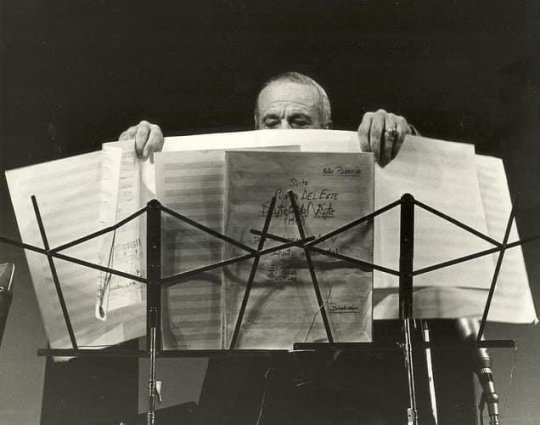
Un día como hoy 11 de marzo, en 1921, en Mar del Plata, Provincia de Buenos Aires nacía uno de los más grandes músicos que ha dado la música popular Astor Piazzolla.

Astor Piazzolla, bandoneonista y compositor, considerado uno de los mùsicos mas importantes del siglo XX. Piazzolla estudió armonía, música clásica y contemporánea, agitador del tango y del jazz y creador de un nuevo y único estilo llamado Nuevo Tango.
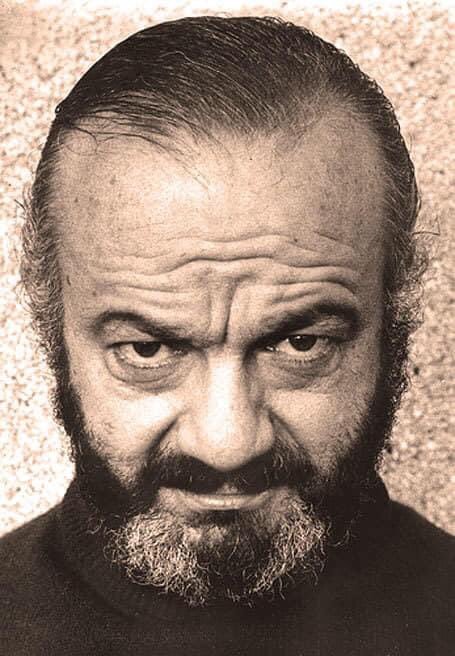
En 1990 grabó uno de sus últimos trabajos al lado del Kronos Quartet, durante su carrera trabajo con Gerry Mulligan, Gary Burton, Paquito D’Rivera, Andy González y un sin número de colaboradores de primer nivel.

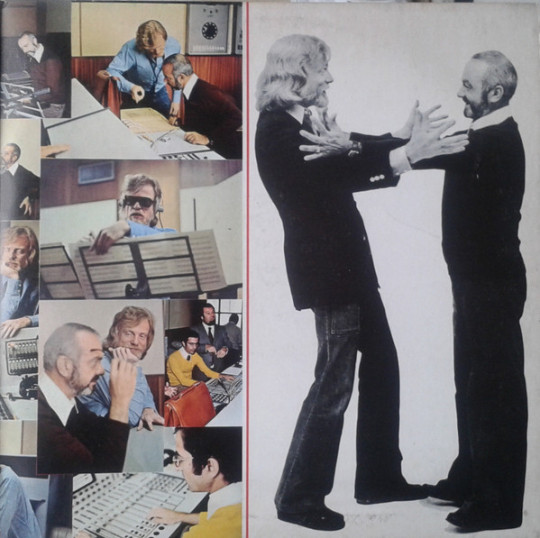
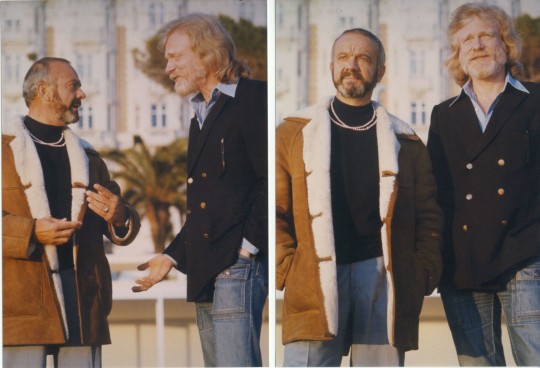
Astor Paizzolla grabo en 1974 el disco Summit Reunion junto a Gerry Mulligan con siete temas de Astor y uno de Gerry.
Mulligan era un fuerte bebedor y durante las sesiones chocó muchas veces contra el carácter obsesivo perfeccionista de Piazzolla.

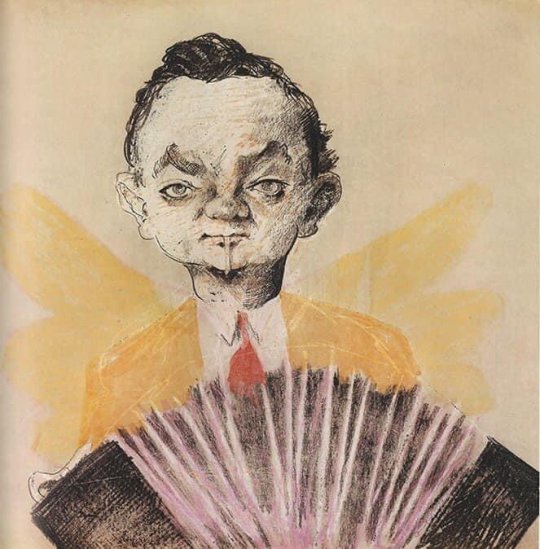
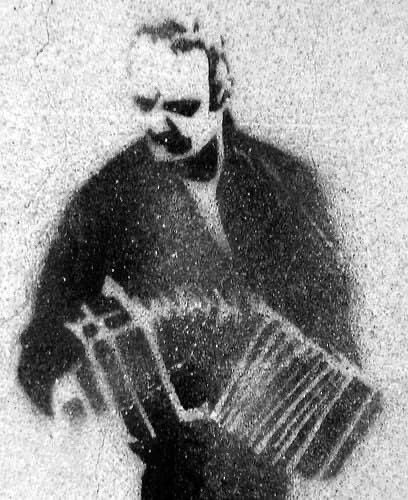
0 notes
Photo

Identidad visual Radio ICM. 2017.
Espacio impulsado desde Improvisación Colectiva en Mar del Plata, Organización no gubernamental que promueve el jazz y la música improvisada en la ciudad y el país. Radio ICM permite poner en el aire la música que no está en las radios. Nos da la posibilidad de darle un espacio a nuestros melómanos favoritos para que abran su arcón de tesoros y los compartan con el mundo.
0 notes
Photo

Sabías que, el 11 de marzo de 1921 nació en Mar del Plata, Argentina, el bandoneonista, innovador instrumentista, director, arreglador y compositor argentino Ástor Piazzolla. Se le reconoce como uno de los grandes músicos latinoamericanos del siglo XX: renovó de forma decisiva el Tango, llamado Tango Nuevo o Sinfónico, introduciendo estructuras armónicas y rítmicas tomadas de la música clásica y del jazz. Su caso es muy especial, único en realidad, ya que brilló de manera espectacular a nivel mundial tanto por su música popular, como por sus tangos porteños y por su talento para la música culta o clásica. (1921-1992) @relaxvideobar www.relaxvideobar.com (at RELAX Videobar RETRO) https://www.instagram.com/p/CprK9H_Mbt2/?igshid=NGJjMDIxMWI=
0 notes
Text
Astor Piazzolla - Oblivion (piano solo sheet music)
Astor Piazzolla - Oblivion (piano solo ver.) has been added to our sheet music Library.
Astor Piazzolla"Music is the most direct art, it enters through the ear and goes to the heart."
Please, subscribe to our Library. Thank you!
Best Sheet Music download from our Library.
Astor Piazzolla - Oblivion (piano solo ver.) has been added to our sheet music Library.
https://youtu.be/Y6VsBx7baOo
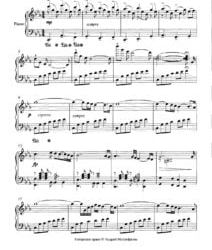
Astor Piazzolla
"Music is the most direct art, it enters through the ear and goes to the heart."
Born on March 11, 1921 in Mar del Plata, Buenos Aires province. He was a bandoneon player and composer.
His contact with music began in New York, where his family lived between 1925 and 1936. At the age of eight, his father gave him his first bandoneon , and he began to take classes with Andrés D'Aquila; he made a recording on acetate when he was only ten years old, without commercial purposes. In 1933, he studied music with the Hungarian pianist Bela Wilda, who introduced him to the sound universe of Bach.
The following year, he met Carlos Gardel and quickly became friendly with him. Gardel heard him play and offered him to participate and play several songs in the film El día que me quieras; in which he played a newsboy. He was also invited to the tour of America in which Gardel lost his life along with his team; but, given his young age, he did not travel because he did not have permission.
In 1936, his family returned to Mar del Plata, and Astor participated in various ensembles and became acquainted with the work of the Elvino Vardaro sextet, which influenced him definitively. Determined to explore tango, he moved to Buenos Aires at the age of seventeen and, shortly after, he achieved his goal: to join the Aníbal Troilo orchestra , first as a bandoneonist and occasional pianist and, later, as an arranger for the orchestra.
He continued his studies in academic music with Alberto Ginastera and, in piano, with Raúl Spivak. His arrangements distanced him more and more from classical tango. Around 1944, he left the Troilo Orchestra to direct the orchestra that accompanied the singer Francisco Fiorentino until 1946, when he composed El desbande, considered by himself his first tango with a different formal structure.
He formed his own orchestra, which he disbanded in 1949, and began writing music for films. He moved away from the bandoneon and approached jazz: the search for a different style led him to deepen his musical studies.
Between 1950 and 1954, he composed works clearly different from the conception of tango up to that time ( To show off , Tanguango , Prepare , Contrabajeando , Triunfal , What will come ), and began to define his style. Also at this time, he wrote pieces of music cultured, such as Rhapsody of Buenos Aires (1952) and Buenos Aires, three symphonic movements (1953). For the latter, he won the Fabien Sevitzky Prize, and the French Government awarded him a scholarship to study in Paris with the famous musical pedagogue Nadia Boulanger, who convinced him to continue on the path of tango:
«Astor, your scholarly works are fine written, but here is the real Piazzolla, never abandon him».
The fellowship lasted for almost a year, and in that time, he formed a string orchestra with Paris Opera musicians Martial Solal and Lalo Schifrin. With Schirfrin, he recorded Two Argentinians in Paris (1955).
Upon his return to Argentina, he summoned top-class musicians and formed the Octeto Buenos Aires. It was made up of Enrique Mario Francini and Hugo Baralis, on violins; Roberto Pansera, on bandoneon; José Bragato, on cello; Aldo Nicolini, on bass; Horacio Malvicino, on electric guitar, and Atilio Stampone, on piano.
Various versions of the Octet had a decisive influence on the future evolution of tango, due to their rhythmic and contrapuntal novelties.
When his father died in 1959, he composed perhaps his most beautiful work in his tribute: Goodbye, Nonino . In 1960, after a stay in the United States, where his style was presented as jazz-tango, he formed a quintet that included musicians such as Elvio Bardaro, Dante Amicarelli, Antonio Agri, Horacio Malvicino, Oscar López Ruiz, Kicho Díaz, Osvaldo Manzi and Cacho Tirao.
In 1968, he composed, with the poet Horacio Ferrer, the opera María de Buenos Aires , for eleven instruments, female and male reciter and singers. In 1969, she began to write, also together with Ferrer, simpler songs for the voice of Amelita Baltar, her partner in those years.
They composed Balada para un loco , which became a great popular success that was followed by others. In 1972, after a heart attack, she decided to settle in Italy for five years. She formed the Conjunto Electronico, recorded Libertango and experienced her approach to jazz-rock. In 1974, she recorded Summit with saxophonist Gerry Mulligan; and, a year later, after the death of Aníbal Troilo, the album Suite Troileana . In 1976, she appeared at the Gran Rex theater with her play De ella 500 Motivaciones ; and, in 1977, with a series of concerts at the Olympia in Paris.
In 1978, she returned with her Quintet and consolidated her international fame with tours of Europe, South America, the United States and Japan. In 1983, at the Teatro Colón, he offered a program entirely composed by him.
In 1984, he performed with the singer Milva and produced the album Live at the Bouffes du Nord ; in Vienna, she recorded Live in Wien with the Quintet. In 1985, he was named an Illustrious Citizen of Buenos Aires ; and he premiered, in Belgium, at the Fifth International Guitar Festival, the Concert for Bandoneon and Guitar: Homage to Liège , conducted by Leo Brouwer.
In 1986, he received the César Award in Paris for the soundtrack of the film El exilio de Gardel ; and he recorded live, together with Gary Burton, Suite for Vibraphone and New Tango Quintet , at the Montreux jazz festival (Switzerland). In 1987, he presented himself with a massive recital in Central Park (New York). In 1988, he recorded his last album with the La Camorra Quintet. In 1989, he formed Sexteto Nuevo Tango, with which he performed at the Teatro Ópera, toured, and appeared as a soloist until its dissolution at the end of that year.
On August 4, 1990, in Paris, he suffered a cerebral thrombosis that left him bedridden. He died on July 4, 1992, in Buenos Aires.
Read the full article
0 notes
Text
No sé si te amo o te aborrezco
como si hubieras muerto antes de tiempo
o estuvieras naciendo poco a poco
penosamente de la nada siempre.
Porque es terrible comenzar nombrándote
desde el principio ciego de las cosas
con colores con letras y con aire.
Violeta rojo azul amarillo naranja
melancólicamente
esperanzadamente
absurdamente
eternamente.
Una mujer joven y su hija muy pequeña (las recuerdo perfectamente, la niña tenía un abrigo rojo sucio y pesadas botas de goma) me empujaron para ser las primeras en presenciar el espectáculo.
Yo estaba en Bleeker Street, con un pan italiano bajo el brazo. Primero escuché sirenas, luego cerraron la calle que dejé atrás. Alguien se había arrojado por una ventana.
Seguí caminando. No pude evitarlo. Iba cantando.
«Mi noche ya no es noche por lo oscura»
A unos cuantos pasos de esa esquina, de esa cada, bajo esa misma ventana alta y negra, la noche anterior había comprado salchichas y cebollas. Era una noche muy fría, tres muchachos tocaban jazz en la acera y un escocés con barba, un escocés auténtico, llevaba por el talle a una menuda japonesa. Perecían verdaderamente enamorados.
Esta mañana también era muy fría. Había nieve sucia, irreconocible. Un ebrio dormía profundamente, como un ángel, en la escalera de un sótano. Al lado, en la vitrina de una tienda de modas, un formidable sol de cartón sonreía.
Vienes entonces desde mis entrañas
como un negro dulcísimo resplandor
así de golpe.
Un río de colores entre sombras
sombras que me deslumbran
colores que me ciegan
criaturas del alma.
Naces como una mancha voraz en mi pecho
como un trino en el cielo
como un camino desconocido.
Mas luego retrocedes te agazapas
y saltas al vacío
y me dejas al filo del océano
sin sirenas en torno
nada más que el inmundo el bellísimo azul
el inclemente azul
el deseo.
«Juguete del destino»
El negro me dio alcance.
—Give me a quater.
—No hablo inglés, no tengo plata.
La palma de su mano extendida era rosada y la línea de la vida parecía un corte, una cicatriz que se perdía bajo el puño deshilachado.
—No entiendo.
—Give me money... Son of a bitch.
Me alejé. Se quedó parado, con las piernas abiertas, hundidas entre la nievas sucia, maldiciéndome. Al voltear la esquina encontré la plaza desierta.
«Tu débil hermosura»
Hedores y tristeza
devorando paraisos de arena
sólo este subterráneo perfume
de lamento y guitarras
y el gran dios roedor
y el gran vientre vacío.
(¿Cuál de tus rostros amo
cuál aborrezco?
¿Dónde nací
en qué calle aprendí a dudar
de qué balcón hinchado de miseria
se arrojó la dicha una mañana
dónde aprendí a mentir
a llevar mi nombre de seis letras negras
como un golpe ajeno?)
Había un sol débil sobre Washington Square, muy débil. Los árboles parecían alambres retorcidos y luego estirados a la fuerza; como si los hubieran puesto entre vidrios amarillos. Desde lejos me hacían pensar en delicadas columnas vertebrales de insectos. Bonita cosa: huesos de insectos. El bar que había frente a casa estaba cerrado con un inmenso candado negro. Me di cuenta de que era domingo.
Siempre amé lo confieso
tus paredes aladas transparentes
como enredaderas de campanillas
como en Barranco cuando era niña
miraba una pareja besarse bajo un árbol.
Tras la ventana adoraba mi fiebre
mi enfermedad llena de espejos
donde yo era todo a un tiempo
el árbol la caricia
la sombra que ocultaba el rostro de los amantes
y la tarde abriéndose como una fruta otoñal
sobre el acantilado a la izquierda
como para enseñarme que el crepúsculo
llega primero al lado del corazón.
Hogueras en un huerto
donde las horas danzaban sin prisa.
El minuto era eterno.
¡Qué misteriosas voces!
¿Por qué cantaban entonces?
Esperé que cambiara la luz. Ningún auto venía. Sólo un ciclista pasó cantando muy fuerte, con voz de tenor. Tenía anteojos, una bufanda roja que flotaba, y la voz salía como un humo de su boca. La escuché hasta que se perdió, cada vez más delgada y clara, en la larga y estrecha calle de depósitos clausurados.
La última palabra que escuché fue corazón. Era una canción de Frank Sinatra.
La plaza continuaba desierta. Miento. Muy lejos, casi junto al arco, exactamente entre la fuente y el arco, caminaba un ciego. Me di cuenta de que era ciego porque llevaba un bastón blanco y tenía aire de no ir a ninguna parte. Me puse los anteojos para ver bien al ciego. No me había equivocado, estaba dando vueltas alrededor de la fuente.
«En tu recuerdo vivo»
Desde lejos bajo el cielo del alma
donde nacen palabras que el amor ilumina
desde allí acostumbraba a cubrirte con joyas
hiriendo tu invisible desconocido seno
con mis dardos de fuego.
Con qué dulzura apartaba
ese velo de lágrimas ausentes
y descubría tu apretada boca
imaginando tu risa
el alba frente al puerto
las gaviotas tu bienvenida
el sol recién nacido
y los viejos perfumes del mar.
Todo era tuyo en ese cielo
maderas rojas y un abrazo
de negras cuerdas que el viento rasga sin prisa.
Y peces y estrellas y medusas
y alguna barca con un nombre de niña
y la isla nacida tras el salto del bufeo.
Crucé la calle y sentí que el cielo era más oscuro a mi derecha. A ese lado las torres más altas de Wall Street parecían dibujadas con carbón, en un solo plano gris lavado con delicadas manchas amarillas y rosas. Cuestión de óptica, parecían un decorado de teatro.
Sabía que estaban muy lejos y, sin embargo, me parecía también que se inclinaban peligrosamente sobre mi cabeza.
La puertas de vidrio giraron y reflejaron todo: la plaza, el sol débil, las torres, el bar cerrado, el semáforo.
—Good morning, Mrs. Szyszlo.
—Buenos días, Joe.
—Nice weather!
—Sí, Joe. Es un lindo día.
Hoy prisionera en tu vértigo gris
dentro de ti
no sé si te amo o si te aborrezco
el rosa exangüe de tu carne
tu degollado resplandor
el río de ojos muertos que jamás te posee
su polvorienta melodía de guijarros
el verano de frutas corrompidas
tus llagas sin cubrir
el negro milagro de tu frente
hinchada de vacío
mendiga que me acosas con el corazón en los dientes
acusándome del crimen cometido en sueños.
No sé si te amo o te aborrezco
porque vuelvo
sólo para nombrarte desde adentro
desde este mar sin olas
para llamarte madre sin lágrimas
impúdica
amada a la distancia
remordimiento y caricia
leprosa desdentada
mía.
Tomado de ‘Valses y otras falsa confesiones’ de la poeta Blanca Varela.
0 notes
Text
Carolina Donati presenta su nuevo disco "ARDE"
ARDE nos muestra a la canción como principal protagonista de un juego entre la sonoridad indie-pop que inició con su primer disco y eclécticas influencias de la artista desde el pop de los 80s, el folk, los Beatles hasta la bossa nova.

ARDE es el segundo disco de la Artista en el que contó con varios productores: Pablo Giménez (EL ZAR), Yago Escriva (AINDA), Juan Ignacio Serrano (JUANITO EL CANTOR), Hernan Rojkin (CHERNO ROJKIN). De ARDE ya conocemos “Otra Vez”, “Que Raro es este Lugar” y “Pasaje Directo” en feat con El Zar.
youtube
Carolina Donati es una compositora e intérprete de CABA, Buenos Aires Argentina. Comienza sus pasos en la música desde pequeña a través del estudio del canto. La adolescencia la encuentra sumando guitarra y piano a sus canciones y formaliza sus estudios musicales como Compositora en la UCA. Su participación en la escena musical porteña la llevó desde joven por distintas agrupaciones y géneros entre ellos Zaldivar Enjambre (pop fusión jazz) y Changuito (folklore fusión). Durante su recorrido musical descubre la pasión por la composición de canciones y lanza su EP debut, “Mes”, en Agosto del 2017. En un periodo de aproximadamente dos años trabajó junto a Pablo Gimenez (El Zar) en la producción de su primer LP, “Lo que quedó”, lanzado en Mayo del 2019. Presentó “Lo Que Quedó” por primera vez en vivo en formato full band en Julio del 2019 en La Tangente (CABA) y continúa llevando las canciones de éste primer material discográfico a distintos escenarios de la escena indie porteña al día de hoy alternando presentaciones en formato full band, trio o sola-set.
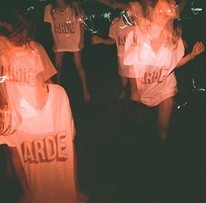
A comienzos del 2020 comienza a trabajar en la producción de su segundo disco, “ARDE”, esta vez junto a distintos productores: Pablo Gimenez (El Zar), Yago Escriva (Ainda), Ignacio Serrano (Juanito el Cantor) y Hernan Rojkin (Cherno Rojkin). Anunciando la llegada de su nuevo material lanza los singles “Otra Vez” y “Que Raro Es Este Lugar” en el 2020, este último acompañado de un videoclip filmado en cuarentena. Finalmente en Marzo del 2021 da a conocer “Pasaje Directo”, el 3er y último adelanto del disco en colaboración con El Zar cuyo estreno también contó con un videoclip (filmado entre CABA y las costas de Chapadmalal, Mar Del Plata).
Escuchalo en Spotify, aquí.
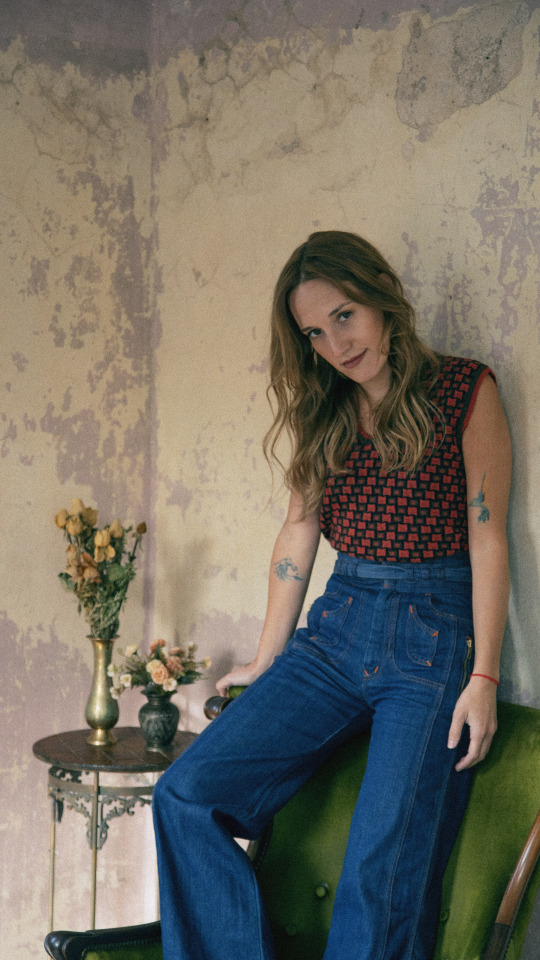
IG: https://www.instagram.com/carolina_donati
0 notes
Text
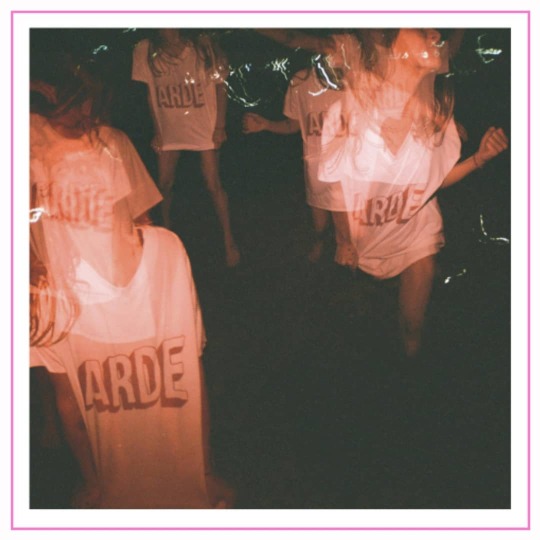
CAROLINA DONATI PRESENTA SU NUEV0 DISCO “ARDE”
ARDE es el segundo disco de la Artista en el que contó con varios productores: Pablo Giménez (EL ZAR), Yago Escriva (AINDA), Ignacio Serrano (JUANITO EL CANTOR) y Hernán Rojkin (CHERNO ROJKIN)
De ARDE ya conocemos “Otra Vez” “Que Raro es este Lugar” y “Pasaje Directo” en feat con El Zar
ARDE nos muestra a la canción como principal protagonista de un juego entre la sonoridad indie-pop que inició con su primer disco y eclécticas influencias re descubiertas como el pop de los 80, los Beatles y la bossa nova.
Los 8 tracks de ARDE fueron co producidos junto a Pablo Giménez (tracks 1, 2,3 y 5), Yago Escriva (tracks 4 y 8), Juan Ignacio Serrano (track 7) y Hernán Rojkin (track 6), quienes también tocaron gran parte de los instrumentos durante el proceso de grabación junto a Bruno Dante y Micaela Cabral en baterías, Facundo castaño Montoya (El Zar) y Jazmín Esquivel como invitados, entre otros. Grabado durante el 2020 y el 2021 en estudio El Mar, Estudio NN y estudio Sale la Luna. (Ficha Técnica detallada en Anexo)
CITA CAROLINA DONATI
“Quise continuar la propuesta inicial indie-pop de “Lo que Quedó”, mi primer disco, pero con más atención en la composición de las canciones y más libertad en la producción. Soy muy fan de la canción y siento que éstas son composiciones más maduras, en las cuales empiezo a encontrar mi propio estilo: palabras directas y sinceras que describen sin mucho misterio sentimientos y situaciones autobiográficas que vivo con bastante intensidad. En lo sonoro siento que la producción y el sonido vintage/lo-fi terminan de dar el toque nostálgico y melancólico que subyace en las letras. Es un gran disco para salir a caminar o para los días nublados y lluviosos.”
ACERCA DE CAROLINA DONATI: Carolina Donati es una compositora e intérprete de CABA, Buenos Aires Argentina. Comienza sus pasos en la música desde pequeña a través del estudio del canto. La adolescencia la encuentra sumando guitarra y piano a sus canciones y formaliza sus estudios musicales como Compositora en la UCA.
Su participación en la escena musical porteña la llevó desde joven por distintas agrupaciones y géneros entre ellos Zaldívar Enjambre (pop fusión jazz) y Changuito (folklore fusión). Durante su recorrido musical descubre la pasión por la composición de canciones y lanza su EP debut, “Mes”, en Agosto del 2017. En un periodo de aproximadamente dos años trabajó junto a Pablo Giménez (El Zar) en la producción de su primer LP, “Lo que quedó”, lanzado en Mayo del 2019.
Presentó “Lo Que Quedó” por primera vez en vivo en formato full band en julio del 2019 en La Tangente (CABA) y continúa llevando las canciones de este primer material discográfico a distintos escenarios de la escena indie porteña al día de hoy alternando presentaciones en formato full band, trio o sola-set.
A comienzos del 2020 comienza a trabajar en la producción de su segundo disco, “ARDE”, esta vez junto a distintos productores: Pablo Giménez (El Zar), Yago Escriva (Ainda), Ignacio Serrano (Juanito el Cantor) y Hernán Rojkin (Cherno Rojkin).
Anunciando la llegada de su nuevo material lanza los singles “Otra Vez” y “Que Raro Es Este Lugar” en el 2020, este último acompañado de un videoclip filmado en cuarentena. Finalmente en marzo del 2021 da a conocer “Pasaje Directo”, el 3er y último adelanto del disco en colaboración con El Zar cuyo estreno también contó con un videoclip (filmado entre CABA y las costas de Chapadmalal, Mar Del Plata).
DISCOGRAFÍA
Lo que quedo – álbum 2019
Arde – álbum 2021
VIDEOS
Qué raro es este lugar
youtube
Pasaje directo
youtube
REDES
Instagram @carolina_donati
Facebook: https://www.facebook.com/carolinadonaticanciones
ESCUCHA “ARDE” EN PLATAFORMAS DIGITALES
0 notes
Text

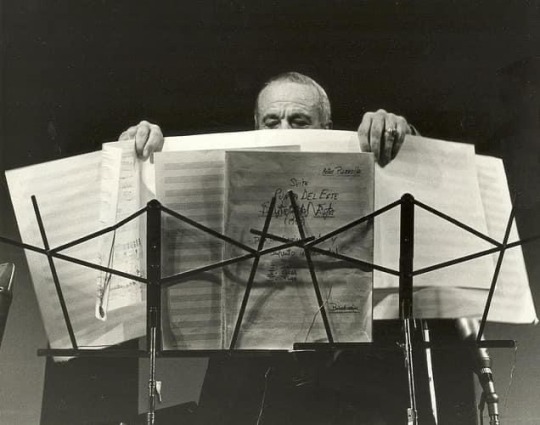
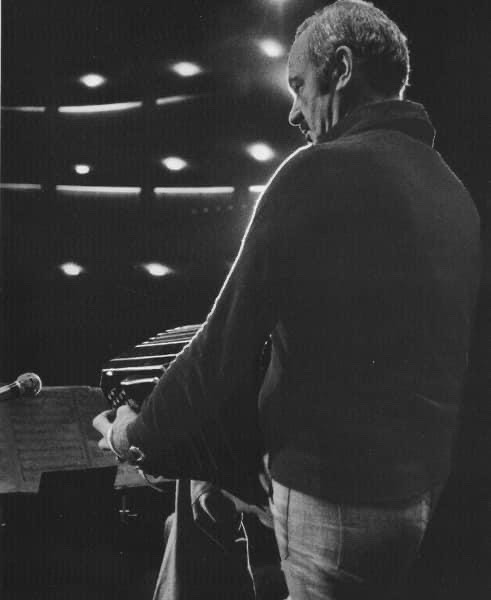
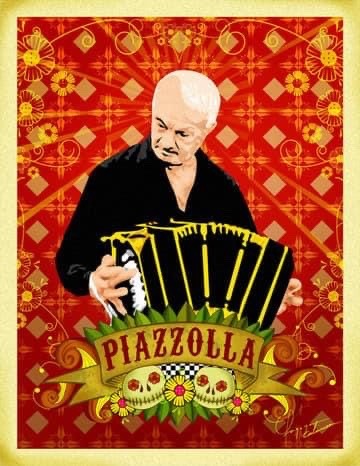
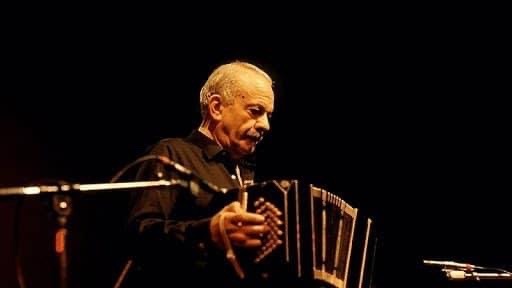
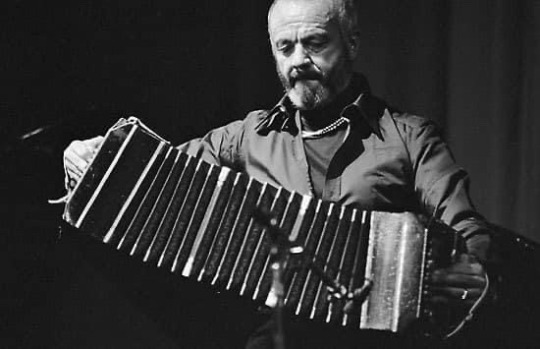



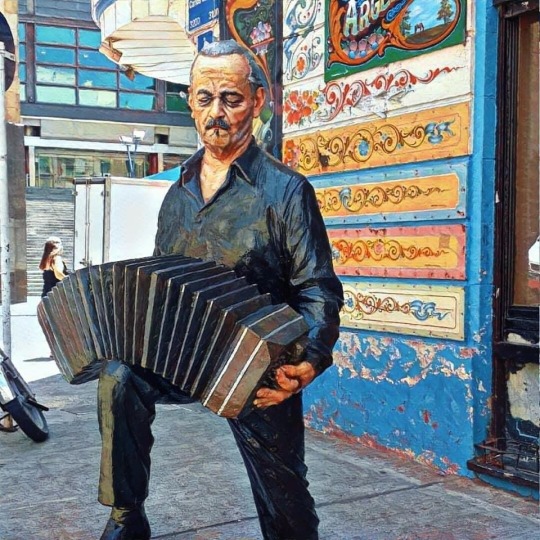
Háganse un favor y escuchen este disco de Astor Piazzolla
The rough dancer and the cyclical night.
Astor Piazzolla en bandoneón.
Fernando Suárez Paz en violín
Pablo Zinger en piano
Paquito D'Rivera en saxo y clarinete
Andy González en contrabajo
Leonora's love teme, Tango apasinado, Knife fight, Milonga for three, entre otros.
El maestro Astor nació un día como hoy 11 de marzo de hace 100 años (1921) en Mar del Plata, Provincia de Buenos Aires. Uno de los más grandes músicos que ha dado la música popular y tal vez el mejor músico-compositor argentino de la historia.
Astor, bandoneonista y compositor, considerado uno de los mùsicos mas importantes del siglo XX. Piazzolla estudió armonía, música clásica y contemporánea, agitador del tango y del jazz y creador de un nuevo y único estilo llamado Nuevo tango.
Para mí gusto personal esta simple y sencillamente en el podio junto a Bill Evans, Antonio Carlos Jobim y Chucho Valdés.
2 notes
·
View notes
Photo
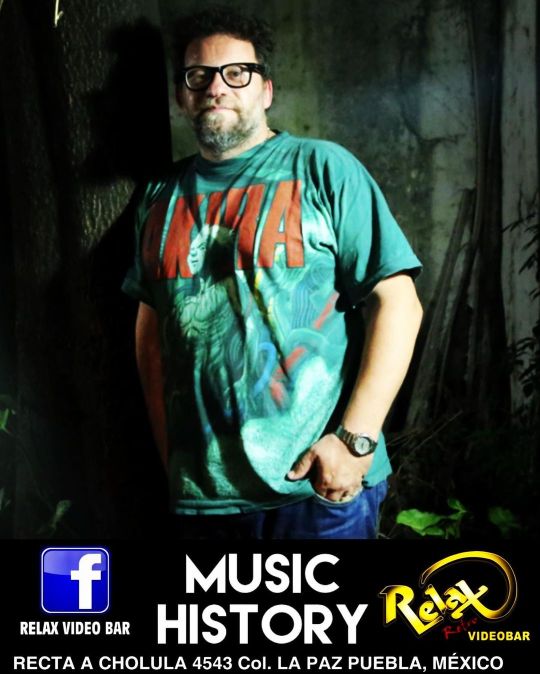
Sabías que, hoy cumple 57 años el músico, humorista y presentador argentino Marcelo Rodríguez ‘Gillespi’ nacido en Monte Grande. Trompetista, pianista y guitarrista, debutó como músico en 1984 en el Festival Mar del Jazz 84 y posteriormente formó parte de La Sonora del Plata (1986-1991). También participó como músico invitado de Sumo (1987) y Divididos (1988-1990), con quienes grabó el disco '40 dibujos ahí en el piso' (1989). Formó parte de la banda Pachuco Cadáver junto a Roberto Pettinato, con el que grabó 'Life in La Pampa' (1992). Con Las Pelotas grabó los discos 'Máscaras de sal' (1994) y 'Amor seco' (1995), en este último como integrante estable. Gillespi ha grabado y tocado con varios artistas destacados del jazz y el rock, entre ellos, Luis Salinas, Javier Malosetti, Walter Malosetti, Daniel Maza, Valentino 'Jazz' Bazar, Willy Crook, Charly García, Pedro Aznar, Los Piojos, Los Ratones Paranoicos, Sosa Stereo y La 25, entre otros. También ha compuesto música para televisión, cine y publicidad. Como solista grabó su primer disco en 1998, 'Ultradeforme', junto a músicos como Pedro Aznar y Germán Daffunchio. Desde entonces ha grabado cinco discos de estudio y dos en directo. Actualmente forma parte de La venganza será terrible en AM 750. Y conduce La hora líquida en Nacional Rock. @relaxvideobar www.relaxvideobar.com (at RELAX VIDEO BAR) https://www.instagram.com/p/ChWIo-ZM86O/?igshid=NGJjMDIxMWI=
0 notes
Text
Astor Piazzolla - Oblivion (piano solo sheet music)
Astor Piazzolla - Oblivion (piano solo ver.) has been added to our sheet music Library.
Astor Piazzolla"Music is the most direct art, it enters through the ear and goes to the heart."
Please, subscribe to our Library. Thank you!
Best Sheet Music download from our Library.
Astor Piazzolla - Oblivion (piano solo ver.) has been added to our sheet music Library.
https://youtu.be/Y6VsBx7baOo
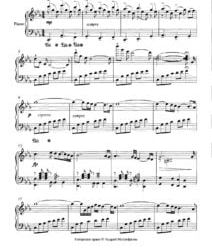
Astor Piazzolla
"Music is the most direct art, it enters through the ear and goes to the heart."
Born on March 11, 1921 in Mar del Plata, Buenos Aires province. He was a bandoneon player and composer.
His contact with music began in New York, where his family lived between 1925 and 1936. At the age of eight, his father gave him his first bandoneon , and he began to take classes with Andrés D'Aquila; he made a recording on acetate when he was only ten years old, without commercial purposes. In 1933, he studied music with the Hungarian pianist Bela Wilda, who introduced him to the sound universe of Bach.
The following year, he met Carlos Gardel and quickly became friendly with him. Gardel heard him play and offered him to participate and play several songs in the film El día que me quieras; in which he played a newsboy. He was also invited to the tour of America in which Gardel lost his life along with his team; but, given his young age, he did not travel because he did not have permission.
In 1936, his family returned to Mar del Plata, and Astor participated in various ensembles and became acquainted with the work of the Elvino Vardaro sextet, which influenced him definitively. Determined to explore tango, he moved to Buenos Aires at the age of seventeen and, shortly after, he achieved his goal: to join the Aníbal Troilo orchestra , first as a bandoneonist and occasional pianist and, later, as an arranger for the orchestra.
He continued his studies in academic music with Alberto Ginastera and, in piano, with Raúl Spivak. His arrangements distanced him more and more from classical tango. Around 1944, he left the Troilo Orchestra to direct the orchestra that accompanied the singer Francisco Fiorentino until 1946, when he composed El desbande, considered by himself his first tango with a different formal structure.
He formed his own orchestra, which he disbanded in 1949, and began writing music for films. He moved away from the bandoneon and approached jazz: the search for a different style led him to deepen his musical studies.
Between 1950 and 1954, he composed works clearly different from the conception of tango up to that time ( To show off , Tanguango , Prepare , Contrabajeando , Triunfal , What will come ), and began to define his style. Also at this time, he wrote pieces of music cultured, such as Rhapsody of Buenos Aires (1952) and Buenos Aires, three symphonic movements (1953). For the latter, he won the Fabien Sevitzky Prize, and the French Government awarded him a scholarship to study in Paris with the famous musical pedagogue Nadia Boulanger, who convinced him to continue on the path of tango:
«Astor, your scholarly works are fine written, but here is the real Piazzolla, never abandon him».
The fellowship lasted for almost a year, and in that time, he formed a string orchestra with Paris Opera musicians Martial Solal and Lalo Schifrin. With Schirfrin, he recorded Two Argentinians in Paris (1955).
Upon his return to Argentina, he summoned top-class musicians and formed the Octeto Buenos Aires. It was made up of Enrique Mario Francini and Hugo Baralis, on violins; Roberto Pansera, on bandoneon; José Bragato, on cello; Aldo Nicolini, on bass; Horacio Malvicino, on electric guitar, and Atilio Stampone, on piano.
Various versions of the Octet had a decisive influence on the future evolution of tango, due to their rhythmic and contrapuntal novelties.
When his father died in 1959, he composed perhaps his most beautiful work in his tribute: Goodbye, Nonino . In 1960, after a stay in the United States, where his style was presented as jazz-tango, he formed a quintet that included musicians such as Elvio Bardaro, Dante Amicarelli, Antonio Agri, Horacio Malvicino, Oscar López Ruiz, Kicho Díaz, Osvaldo Manzi and Cacho Tirao.
In 1968, he composed, with the poet Horacio Ferrer, the opera María de Buenos Aires , for eleven instruments, female and male reciter and singers. In 1969, she began to write, also together with Ferrer, simpler songs for the voice of Amelita Baltar, her partner in those years.
They composed Balada para un loco , which became a great popular success that was followed by others. In 1972, after a heart attack, she decided to settle in Italy for five years. She formed the Conjunto Electronico, recorded Libertango and experienced her approach to jazz-rock. In 1974, she recorded Summit with saxophonist Gerry Mulligan; and, a year later, after the death of Aníbal Troilo, the album Suite Troileana . In 1976, she appeared at the Gran Rex theater with her play De ella 500 Motivaciones ; and, in 1977, with a series of concerts at the Olympia in Paris.
In 1978, she returned with her Quintet and consolidated her international fame with tours of Europe, South America, the United States and Japan. In 1983, at the Teatro Colón, he offered a program entirely composed by him.
In 1984, he performed with the singer Milva and produced the album Live at the Bouffes du Nord ; in Vienna, she recorded Live in Wien with the Quintet. In 1985, he was named an Illustrious Citizen of Buenos Aires ; and he premiered, in Belgium, at the Fifth International Guitar Festival, the Concert for Bandoneon and Guitar: Homage to Liège , conducted by Leo Brouwer.
In 1986, he received the César Award in Paris for the soundtrack of the film El exilio de Gardel ; and he recorded live, together with Gary Burton, Suite for Vibraphone and New Tango Quintet , at the Montreux jazz festival (Switzerland). In 1987, he presented himself with a massive recital in Central Park (New York). In 1988, he recorded his last album with the La Camorra Quintet. In 1989, he formed Sexteto Nuevo Tango, with which he performed at the Teatro Ópera, toured, and appeared as a soloist until its dissolution at the end of that year.
On August 4, 1990, in Paris, he suffered a cerebral thrombosis that left him bedridden. He died on July 4, 1992, in Buenos Aires.
Read the full article
0 notes
Text
Queen's hectic days in Argentina: secrets behind the shows, the meeting with Maradona and a love affair for Freddie Mercury
The band arrived in the country in 1981. Curiosities and "pearls" of a very special visit
By Matías Bauso- Infoshow
An exultant and provocative figure, who may appear in tight white pants provocatively exposing his ass to a heated audience or who sits at the piano with a very short and tight satin pants that would blush the most enthusiastic devotee of sadomasochism, a guitarist who plays in a t-shirt with an immense Union Jack, crazed masses, street chases in search of an improbable autograph, China Zorrilla, Miguel Romano, Diego Maradona, ItalPark, the military, the repressive climate, the Rambla marplatense and even an unknown love affair. This story has everything. Queen's visit to Argentina in 1981 was much more than a musical tour.
Queen's enthusiasm - both current and retro - is a faint reflection of what happened in the country at the end of February 1981. Like the Beatlemania in the sixties, the presence of the English quartet unleashed a collective madness never before seen in Argentina.
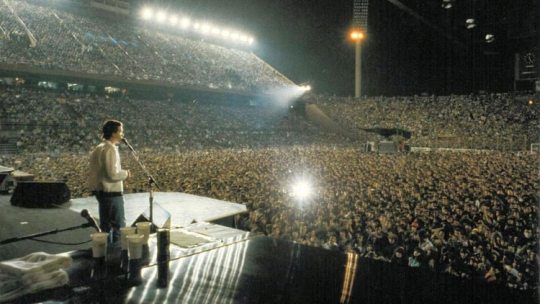
▪Queen at Velez Sarsfield Stadium
Queen monopolized the attention for more than a week. Television news, radio programs, magazine covers, conversations in bars, newspaper supplements (not so the covers of the main ones: at that time it was still not allowed to put show business news on the cover; only Chronicle excepted for that rule).
The band led by Freddie Mercury gave five concerts in Argentina. Three in the Vélez stadium, one in Mar del Plata and another in Rosario. The public success was colossal.
The first performance was on February 28 in Velez, repeated the next day, then stop in Mar del Plata and Rosario. The last show was again in Buenos Aires. That day the capacity of the stadium overflowed. The contagious reaction had taken effect. Those who had not gone, wanted to go; those who had already witnessed some of the shows wanted to be there again.
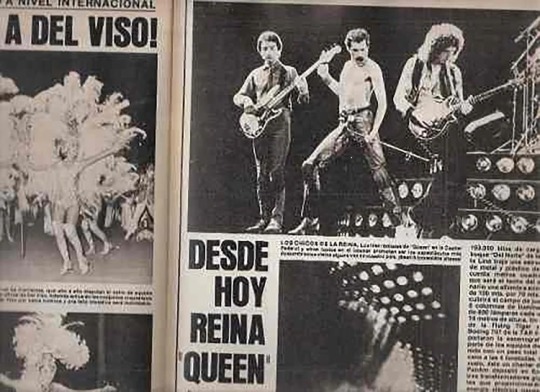
▪Queen gave five shows in Argentina
The regulations of the spaces in the public spectacles, in those times, were at least, morose. Just look at the photos of any grandstand in a superclassic of the early 1980s. Producers sold more tickets and that fifth show was the busiest. It is estimated that between those who paid for their tickets and those who snuck in more than 60,000 people attended that night. At one point the capacity The crowd could barely move. Whoever reached into the pocket to take out the lighter for a cigarette could set in motion a human tide that would end up crashing into a paravalanche or the barbed wire. In the field, the situation was a little more relaxed. Being the first experience in which this section was offered for sale, the estimates were more cautious. Thus, the police decided that the best way to decompress the people was to drill holes in the Olympic fence and allow part of the public to pass into the field through these improvised holes.
The magnitude of the event and its immense repercussion can be explained. It was the first time that a rock band had reached the country at the peak of its career. These shows were part of the world tour to present the album "The Game". Queen was one of the most important bands in the world and arrived in Argentina at its peak.
Although the specialized critics did not treat them very well (it was a habit that had started in the United Kingdom and had spread to the United States) the album contained several hits: Another One Bites the Dust, Crazy Little Thing Called Love, Play the Game, Save Me. The British band was a pioneer in including Latin America in their itinerary. Until then the world tours were not such, they only included the United States, Europe and Japan.
The history of Queen's Latin American tour shows why this was so. In Mexico, six of the scheduled performances had to be cancelled, Pinochet did not authorize the performance in Chile, in Brazil the Rio and Porto Alegre shows were suspended, and in Venezuela two more due to the official declaration of mourning for the death of an ex-president. However, the band's bet, beyond these improvisations, unthinkable today, (in times of presales, early birds, insurance and armies of lawyers), was more than successful.
There was a precedent in the country of an international star appearing in a stadium. In 1973 the Mexican guitarist Carlos Santana played with his band in old wooden stadium of San Lorenzo. But despite his reputation and fame, Santana did not have the repercussion of the English band and at that moment in his career his musical search was turning towards fusion, towards jazz-rock. The lack of experience made the stage stand in the middle of the arena and there was no audience in the field. The closest spectator was, hopefully, 40 meters away from the artists. The sound - the lack of it - was another problem.

In 1981 Queen came to the country with only that antecedent. The show they brought was unlike anything seen in the country. A huge stage, consoles of moving lights, an impressive sound power, fireworks and tricks, a worked scenic staging, immortal hymns and a performer like Freddie Mercury.
Queen's vocalist's ability to perform - but especially on stage - exceeded expectations. There he was, in front of more than 50,000 people, imposing the rules. What he wanted was at stake. A game that had no public exposure in the country, that was silenced and repressed. He did not modify his proposal despite the repressive climate, the censorship. One of the particularities of his performances in the country was that at the five of them they played a song that was somewhat lost in their discography and that many Argentinians did not know: Get Down, Make Love. It was a carnal, erotic and explicit song, with direct references to oral sex.

▪Diego Maradona and Queen
Queen did not show any major itching in regards to those who ruled in the places where they performed. This South American tour was a good example; in its initial schedule it passed through three countries governed by dictatorships. Years later it was also presented in South Africa despite international sanctions due to Apartheid.
It is often claimed that Queen's musicians met with Argentina's president, Roberto Viola. The truth is that Viola had not yet assumed that role. He was a member of the military board, Chief of the Army, but the president was still Jorge Rafael Videla. His investiture would take place weeks after the visit of the British.
Viola had a more political profile and believed that a slight opening was convenient. In that plan, and instigated by his son -who had been a football player-, he met at home with Freddie Mercury, Brian May and John Deacon. Roger Taylor, the drummer, missed the appointment. Today, almost four decades later, many affirm that his absence was due to his political positions, even though he neither at that time nor now has issued any opinion on the matter.

▪ The band met with Roberto Viola, one of the members of the Military Board
The memories of several of those involved - members of the band, technical staff, manager and even the photographer - are impregnated with political valuations that seem to have been concocted with the passage of time and do not represent what they thought and felt at the time. If so, it can be said that they had a unique capacity for dissociation, almost constituting multiple personalities. The presence of military and police personnel was strong. That was because the arrival of the English band had unleashed an excitement rarely seen. Every movement, every displacement was followed by hundreds or thousands of fanatics. And no one wanted any disturbance to happen or the musicians to do any harm.
The repressive vocation of the Argentine military forces of those times does not need to be underlined or exaggerated. For example, the correspondent of the American Rolling Stone magazine described the ditch that separates the South stalls from the playing field at the Stadium as a key to the Argentine dictatorship.
This interpretative excess (most of the Argentine stadiums built in the forties and fifties have a ditch) is combined with certain data, with images of police and military forces repressing whoever approaches the musicians, violently liberating their path. Around the Sheraton Hotel, teenagers stood guard to try to and get in touch with their idols.

▪ Another of the Argentine magazines that showed the presence of the group in the country
In Mar del Plata, the musicians stayed at the Provincial Hotel. Freddie Mercury's movements were limited. Enclosed in his room, the best in the hotel, he let time pass watching the movement of the Rambla from the window. So it was that one afternoon, that habit turned into a love split. His partner at the time, Peter Morgan, offered him to go shopping around the city. Freddie explained that it would be impossible for him to go ten meters without being buried under the youthful enthusiasm. A couple of hours later, the artist saw from the window of his room his partner talking to a young man on the Rambla. The jealousy was immediate and so was the breakup, despite the fact that Morgan denied that he was the one who was walking with another young man on that Mar del Plata sunset.
This concert was the worst of the five. The security was very bad, thousands of people entered the stadium without tickets, the mounted police attacked the public in the same field of play of the World Cup Stadium. To continue the tour, the musicians demanded that the security issue be adjusted. The condition was fulfilled.
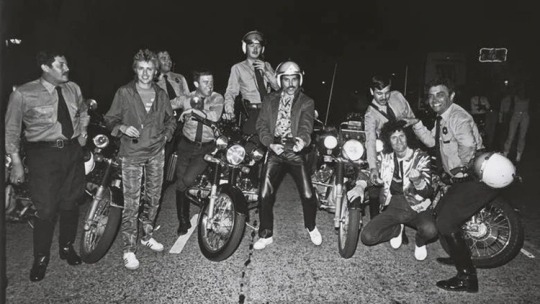
▪ There were strong police operations to “protect” the band
The press and the local public were dazzled by the performance of the quartet. The visual proposal was unique, Freddie's vocal and histrionic abilities, May's musical skills, the solvency of the rhythmic base, the impact of the staging. However, international critics still treated the group with disdain. The Rolling Stone critic gives them no more merit than a pub band. He even mocks their incompetence. Only the dedication in each show and the enthusiasm of the Argentine public stand out. One of the events that most surprised the local public, beyond the almost perfect succession of invincible hits, was Mercury's display and magnetic attraction. The local rock leaders were static, even somewhat modest.
As their stay in the country continued, the musicians received more and more affection from the public. They were amazed by the reaction of their fans to each song, how they knew the lyrics, how they participated enthusiastically and actively in the show. The peak was unfailingly produced in Bohemian Rapsody and, almost on the other side of that opulent and operatic work: Love of My Life was played with Freddie on the piano and Brian on the guitar. The audience sang the entire lyrics, without pauses. In the video recordings of the song you can see the mixture of surprise and joy of May and Mercury.

For the last concert of the tour in the country, they returned to the Vélez stadium. In the encores came the surprise. Freddie re-entered with the Argentine National Team shirt and addressed the audience in English: "I want to introduce you to a friend of yours: Maradona". The pirate recordings allow you to hear the roar of the crowd, you even hear some "Maradooo, Maradooo". Diego with his tight, high curls came on stage with sweatpants and a blue t-shirt. The footballer spoke fluently: "I want to thank Freddie and Queen for making me so happy. And now “Another bites the dust”.
Deacon and Taylor start Another One Bites the Dust, the group's latest hit. Then would come the famous photos in the locker room. Freddie with the light blue Argentine T-shirt from Diego (in the show he used another one), and Maradona with a T-shirt with a big British flag that covered all his torso, similar to the one worn by Brian May in some part of the concert. That photo, would have been unimaginable a year later (Fauklands's War). At the time of the concert, although today it seems unreal, Queen was better known worldwide than Maradona.
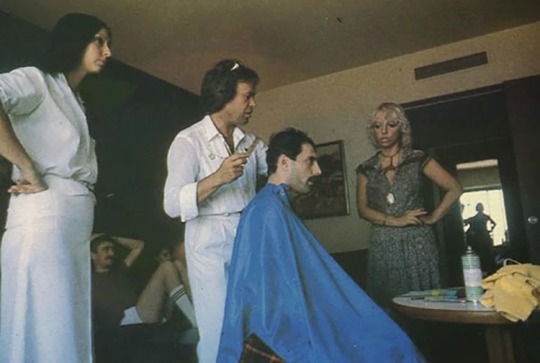
▪ Miguel Romano, one of the stylists of the moment, together with the musicians
Journalist Juan Manuel Cibeira says that in a barbecue at the Argentine producer's house, Mercury announced that he would go out with the Argentine t-shirt. The Argentines present tried to dissuade him. They had a hard time explaining the situation to him. Rock and football in those days were two worlds that in Argentina had no point of intersection. For the rock people, football was something without brightness, without any evaluation. Any reference to it or the adoption of any of its rites or symbols was frowned upon. Mercury, more accustomed to the crossing of these two popular passions by what he saw in England, did not listen to the advice. And, in this way, he produced one of the first contacts between football and rock in the country, a situation that became naturalised in the mid-nineties.
Maradona was not the only local celebrity who came into contact with Queen. In Youtube circulates a video of an interview that the actress China Zorrilla did to Freddie Mercury. The Uruguayan actress in perfect English speaks about the answers of the singer, monologue, almost does not ask questions and forgets the simultaneous translation, thus a bizarre truncated dialogue of more than three minutes in English takes place in central time.
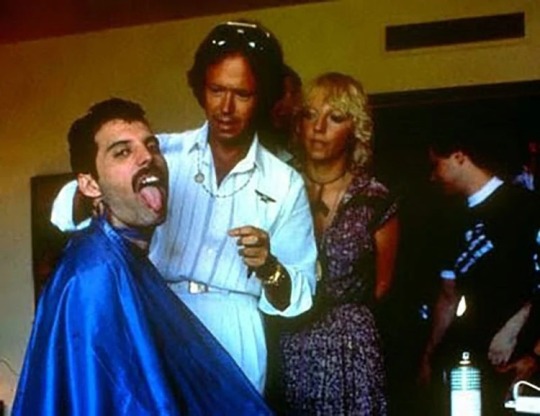
Local Journalist Juan Alberto Badía, on the other hand, was the one who interviewed the musicians for Channel 9, which broadcasted the first live concert for the whole country and for Brazil ( it made very high rating peaks). The presenter was also the one who introduced them in the stadium. In the magazines of the time you can also see how the stylist Miguel Romano cut Mercury's hair before the last show and how in his free time, Brian May took his family to Ital Park, playground where several generations of citizens spent their childhood.
Queen's five concerts in the country marked an era, pioneering the arrival of great rock figures to Argentine stadiums. Many years would pass, the monetary convertibility and a much more global structure of the record business so that international stars would take the country as a reasonable place for their presentations.
103 notes
·
View notes
Text
Denver cayó ante Utah con buenos minutos de Campazzo
Denver cayó ante Utah con buenos minutos de Campazzo
Denver Nuggets perdió como local frente Utah Jazz por 109 a 105 en una nueva fecha de la NBA.
El base cordobés, de 29 años, estuvo en cancha durante 11 minutos. El exjugador de Peñarol de Mar del Plata y del Real Madrid encestó 1-3 en dobles y 1-1 en triples. Todos los puntos fueron convertidos en el segundo cuarto. Además, el armador del seleccionado argentino colaboró en su producción…
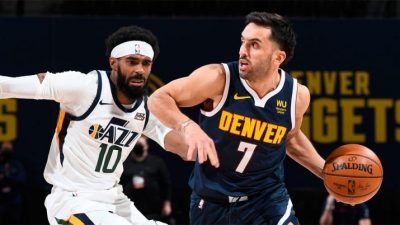
View On WordPress
0 notes
Text
The Story of Ana and Ruben
It was Yom Kippur 1963. I was studying at la facultad de psicología and I had this friend, Irene Costa, who knew a place where we could do some testing practice, this town outside of Buenos Aires, called Tropezon, meaning tripping. So we went there and you know I was introduced to this young Doctor who worked there.
It was called the blue cross of Tropezon. La cruza azul de Tropezon.
Yes, right, how long had you been there?
I was there about 3 months, working and us six guys had rented the place.
Oh you rented it, you didn’t buy it.
No, no we rented. We didn’t buy it, yes. And it was a clinic. It had dentists physicians, every day a different guy was on call. So my day was on a Saturday.
Sit up straight.
So, ehh, that day Ana came and she was, eh, a cute girl, but I had a pretty serious relationship with another lady for many, many years, so I was not ready to, I ended that relationship about two months prior, that relationship lasted about 4 or 5 years, long, long time, so ehm, so she came, and she introduced herself and eh, we started talking, what did she do, what did I do.
And you thought I was attractive?
Yes, but I had to make a house call. At that time from the clinic we made house calls. So I asked her if she wanted to come with me
I think your speeding up the story Rueben
Maybe that day was not Yom Kippur.
La primera dia?
I don’t remember. You tell it.
Well I thought it was, but it doesn’t matter. Well there was this young doctor.
Handsome?
He was good looking, he was handsome to me, churro como dijeron en la Argentina. And ehm, pleasant, simpatico. So I like him. You know, he looked like Gregory Peck. And soon after that I developed this little crush on him. And I would be there once a week every Saturday, right, and I would ehm do testing, people they would make appointments, and I would do testing for poor people, they served me as subjects and then uh around noontime we would all get together, the different people, the staff that worked there and it was pleasant right? It was really nice. And eh you know as I had this crush I thought that maybe, maybe he also found me cute and that maybe I was expecting him to ask me to go on a date with him.We would talk, we would talk. Yeah and eh and it was I guess good vibes that’s it. But, um, he didn’t. So one week pass by, about five weeks pass by and nothing happened. So this last time I was there, it was on November 9th and I thought it would be the day, you know it was my last chance to make an impression and you know, this was a very nice place, so I brought flowers, I had gone to the beauty parlor. I lived in an apartment building that my father had built and there was a beauty parlor there so it wasn’t like I had to go and you know. At one point it was raining so he invite me to go see some patients that he would see
I had to make house calls. We walked because it was a few blocks away.
I saw he was very nice with the patients. I liked that about him. And then we came back. He was very nice. We had this umbrella, it was big but not that big, so we huddled together very close, and he held my shoulder. And then we went back to the clinic and maybe we had lunch and then perhaps I was hopeful that he would invite me to I don’t know to go someplace
A date
But I didn’t know about his history at that point. About how he wanted to come to United States, I didn’t know that he had a girlfriend for 5 years, I had no idea. But so we went back and at one point I was somewhere and I hear him talking to someone on the phone and he’s saying “Ok, so tonight we are all ready, we have it all planned, and we are going to Mar del Plata
It’s a resort
“We are going to a resort, we are going to meet some chicas there and whatever” So thought to myself: this is the end of my illusion. And that’s it. What happened with you Ruben?
Well because I had broken up a long relationship with another girl. For five years, you know. So I was planning to come to United States.
You were planning to come to United States with her right?
Yes, this was November 9, on October 15, I think, I took the exam, the ECFMG, Education Certification for Foreign Medical Graduate in Buenos Aires and I was waiting for the results to come to the United States. To offer me a contract. But I didn’t know the results. In the meantime I went out with her to see the patients and she went back home.
And I was very upset and I decided not to go to the clinic ever again, totally extricate him from my heart. And that’s it, no more. So I called the clinic and I spoke to him and I said “I would like you to erase my name from the schedule. From now on I am not going to come on Saturdays, it doesn’t work for me anymore, so I will go on Tuesdays” When I knew he wouldn’t be there. And then he said “Does that mean that I will not see you again?” and I said “Well if you ever want to see me you have my phone number” And that was it. You know, I was upset, I was hurt, I was miserable, I hated him with a passion.
But you know, she was smart. You know, she threw the bait and I bit it. A couple hours later I called her.
I don’t know, maybe he realized he was interested.
And then I called her and said “So tell me, what are you doing tonight. You know because I am finishing my shift, at I don’t know, 8 o’clock or something like that” and she said “No, I have a birthday party” and I said “Well maybe don’t go to the party, so we can go out” and she said “Well, not yet, I have to make a phone call” and then she called later and said “I am free we can go out”. So I arranged to meet her at the corner of her house. Boyaca Paez.
Yes, he made it easy, because the clinic was in Tropezon, which was in the outskirts of Buenos Aires.
I had to take a train and a bus. I went straight. I had clothes, a shirt, a tie. At that time, the doctor dressed, with a shirt and a tie and a jacket. Very formal. I was there at around 10 o’clock, 10:15, 10:30, but she doesn’t show up. And the plans were for 10. I didn’t know what happened. I waited a little longer, and thought if she doesn’t show up, I’ll go home.
And your home was not that close either.
All of a sudden she comes walking, close to 11. So we went to this place called “Chez Moi”, my home, my little home, mi casita, a nightclub, but very small, just for couples and dancing. They played boleros and ehm american jazz, like Frank Sinatra and you know, you start late.
Yeah, there, it was very common to come home at like 3,4,5 o’clock in the morning. In those days, here they didn’t.
We walked back to her place, quite a bit, at like 2, 3 o’clock.
My parents were in bed but awake, you know expecting my return. They always did, they always did, they always did. La nena. Mi papa, me acuerdo que me pregunto en ídisch como en inglés sería “So, how did it go” but in ídisch it was “Nu, como es?”. I showed him the picture, he had given me a picture on the first date, and I remember, either my mother or my father saying “Tiene una cara de bueno, que de bueno que tiene parece Juan 23 el papa” And from then on we saw each other.
Almost every day. But I was waiting for the results of my test. The test came back that I passed.
That was a big deal.
Yes, so I had this cousin, Johnny, who came to the United States and also I was a resident in surgery in Buenos Aires in a big hospital called Ramos Mejía and the instructor was this guy of the name Terz, T, E, R, Z, cancer surgeon and he just came back from the United States and he said “You guys, you should try to go there, because the training is very, very intense.” The idea was to go, get the good training and return to Buenos Aires. It wasn’t so easy to be a jew and a doctor in Argentina in those times. Once, I was applying for a residency, and there was the first professor, and he asked me what do you want to do and I said to be a surgeon and he asked me where was I practicing, and at the time I was practicing at the jewish hospital in Buenos Aires, I said that I was on call one day a week. He then said that there were not too many vacancies and that I should try applying to the jewish hospital because I was jewish. You know if you were jewish, they tried to keep you in your place. And you know when I was in the military service, at the age of 20 all the men had to serve for one year in the military in Buenos Aires, it was mandatory, and I was assistant to the lieutenant, and the lieutenant was nice guy to me, but you have to go through basic training, and there was a sergeant, a really bad guy, he would kick me and hit me. “judío de mierda” me decía
A vos? En serio?
Si. So one day I told the lieutenant what happened. The next day the other guy was in jail. For seven days, they put him in the calabozo for abusing a soldier. After that he didn’t even talk to me.
Yo no sabia eso. Nunca me contaste eso.
Y bueno. Fuera antes de conocerte.
Bueno en todo caso, cuando recibió la noticia, de qué pasó el test me cayó, como dicen en Argentina, como un balde de agua fría, mal. Never in my wildest dream had I thought of moving to the United States.
Because she belonged to the lefty parties.
No I didn’t. I didn’t. By then I didn’t. But I had this image, I guess part of a stereotype, of these men in, how do you call it, las musculosas?
Wifebeaters
Ok that they would be in those shirts, and they would have their beer and they would be in front of the tv. Like Marlon Brando in a Streetcar Named Desire. Or on the Waterfront. I have to be honest, young people in those days in Argentina, they didn’t have the best opinion of the United States or the CIA. But he would say, he promised that it was only for five years, only for five years, only for five years. That was the plan.
No I would come here for one year, while she finished her career
Right the original idea that Ruben had was that he would accept that residence for one year
At Elmhurst
No it was in Washington
The original was in Washington but then I changed because of Leo. He was Ana’s mom’s first cousin. And he lived in New York. He had come there before the war, in the 1920s.
But Ruben you’re moving a little too fast.
Yes, so the first one was inWashington D.C.. The hospital was called the Washington Hospital Center were Reagan was taken when he was shot
So he told me about this plan and he said that he wanted to go to the United States, go for a year and then come back and get me and when I finished with my degree because I was not yet finished with my degree and we would then come together. But the idea of him going by himself for a year, and for us not to see each other, it was 10,000 miles away, and we were only going out for four months something like that, I thought it was very risky to do that so that was the second time I did something pretty bold, I said “Listen if you want to go, you go but, ehm, then I don’t know what’s going to happen with us, I cannot promise anything, in a year people really can change, you could change, I could change, so you decide, but I cannot promise that I will wait for you.”
So I postponed the trip. And one year later we got married.
No, it was eleven months after we met.
You’re right Ana, it was eleven months
0 notes
Text
Sábado lluvioso por la mañana, aprovechando el silencio de la casa gracias a que sus hermanos mellizos de 11 años estaban durmiendo y el sonido de la lluvia de fondo, por fin decidió comenzar con la lectura de Elisa, luego de un viernes aburrido que no sucedió lo que esperaba y una semana corta y que además tuvo el plus de que el miércoles fue a la bombonera y todavía sigue con las canciones de cancha sonando en su cabeza. Antes de comenzar se preparó un café con leche, abrió la persiana y por fin comenzó la lectura de “Elisa, la rosa inesperada” tras posterga lar varios días, negada, como generalmente hace sus tareas del colegio.
Se encontraba dentro de su pieza, toda desordenada, sentada en su escritorio lleno de cosas, de fotocopias del colegio, unas remeras que todavía no guardó, su notebook hasta huevos de pascua y su portacosmeticos que lleva sus actividades fuera del colegio, jazz y natación. De frente, su espacio preferido de la pieza: una plancha metálica de color fucsia con corazones donde tiene imanes, fotos, papeles con un valor muy importante, algunas colocadas ahí hace años. Allí se encuentra un imán de cada viaje que realizó, desde Disney, México y otros países hasta Salta y Mar del plata. También cartitas de unas amigas, dibujos de su hermano y una medalla de cuando salió campeón su equipo en el campamento de séptimo de grado.
Al terminar de leer el primer capítulo, lo primero que le se viene a la cabeza es como los padres de Elisa la abandonan para seguir con lo que más les gusta, la cumbia y de cómo sería vivir sin el acompañamiento de ellos, que tanto se necesita y tanto a Aye le gusta. Esta situación muchas veces ella la pensó, ya que lo ve en su familia, donde sus papás al tener a su hermana mayor, su primer hija, dejaron todo de lado para darle lo mejor. Su mamá dejó su carrera de derecho y realizó muchas menos pinturas como hacía antes y así continuó cuando nació Ayelen y sus hermanos, su papá dejo de ir a la cancha y de juntarse con sus amigos. Y piensa que lo mejor sería que los padres no dejen de hacer lo que siempre les gusto continuando con el rol de la paternidad y brindándole cariño y apoyo, aunque de alguna manera tener hijos te obliga a llegar a esta situación. Pero como en todo, hay que llegar a un equilibrio, o por lo menos, es lo que a ella le gustaría llegar cuando le llegue el momento.
#LoccisanoAyelen#5toB#larosainesperada#mbc#LilianaBodoc#abandono#paternidad#primeraparte#egoismo#bitacoradellector
1 note
·
View note